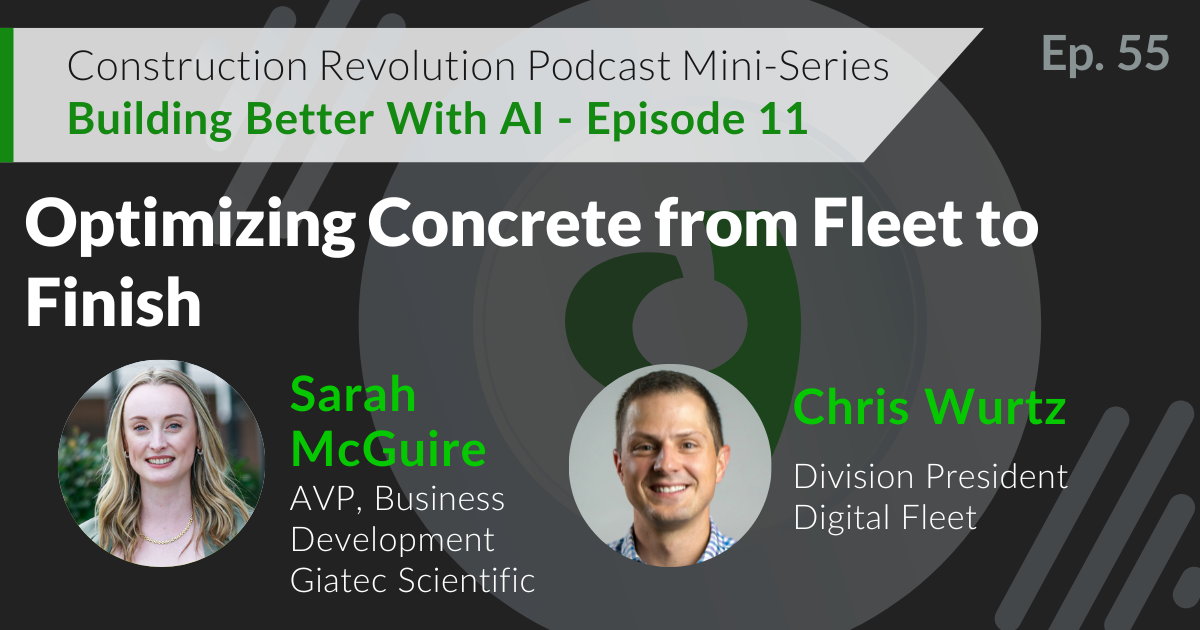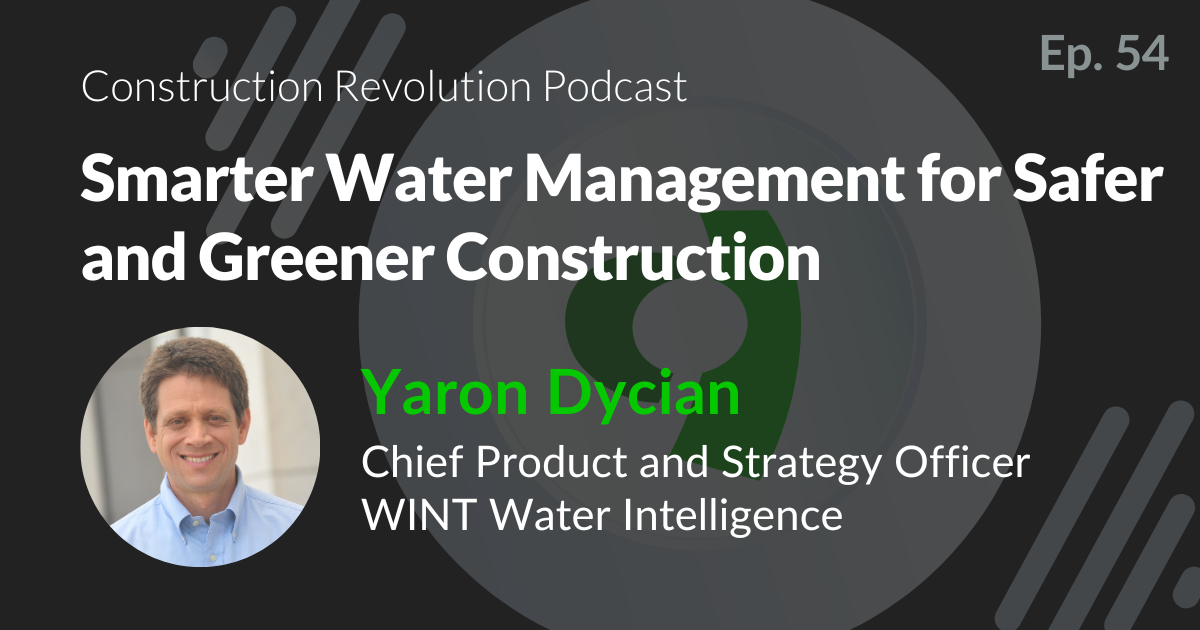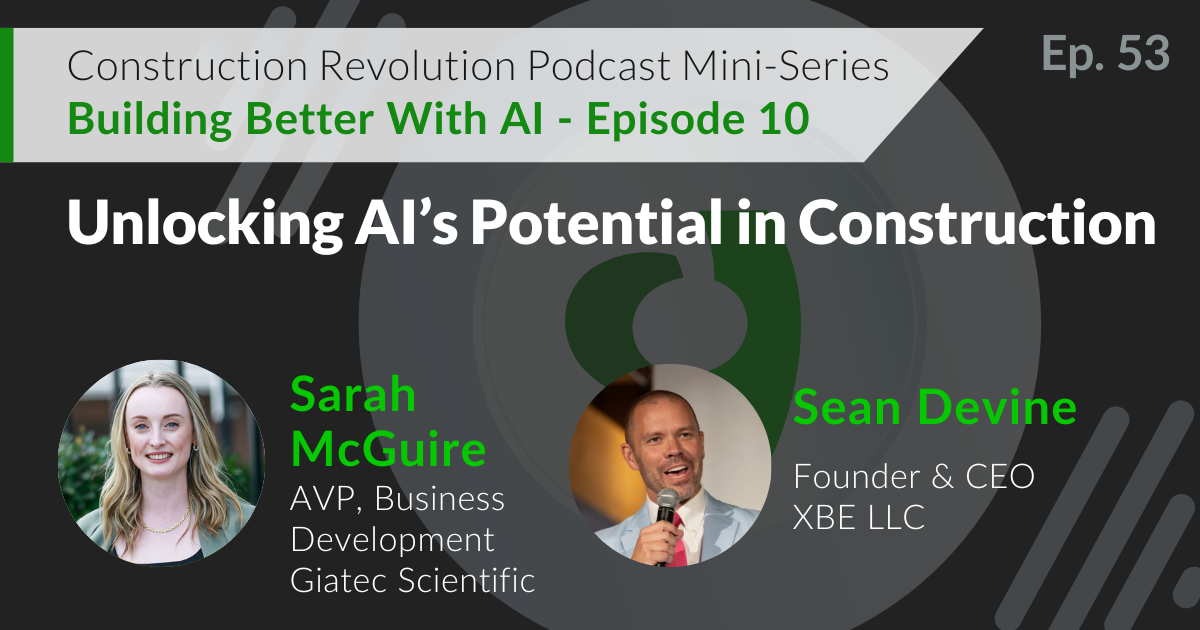
Episode 4 |
April 13, 2021
The Digital Age of Construction
In This Episode
In this episode we are joined by Nathan Metcalf, Public Relations and Editorial Manager at The Canadian Concrete Expo as we discuss the latest trends and technologies entering the construction industry. We touch upon how the industry has adjusted to a digital format, upcoming technology such as virtual reality, and the influence of construction media.

Host
ERIC YEE
Content Marketing Manager, Giatec Scientific Inc.

Guest
NATHAN MEDCALF
Public Relations and Editorial Manager at The Canadian Concrete Expo.
Podcast Transcript
Eric:
So Nathan, when it comes to staying on the cutting-edge of construction news and trends, where do you get your information?
Nathan:
Well I get a lot of my information directly from the sources themselves, but most people don’t have that kind of access. So, for the general public, I recommend Daily Commercial News and Journal of Commerce for Canadian construction news, Construction Dive for US construction news, Heavy Equipment Guide, Construction Equipment Guide, Compact Equipment and Equipment World for heavy equipment news. And two of my favorite shows are the James Benton’ ConTechCrew and Wayne Grayson’s The Dirt.
Eric:
Oh, that’s great. We actually just had one of our co-founders Aali The ConTechCrew on the last episodes.
Nathan:
Yeah. Yeah. I watch his show quite a bit, really great guy. I met him in person, I’ve interviewed him for a couple of articles. So, him and Wayne Grayson, who comes out of Equipment World, he does a really good video in depth discussion of equipment and other trends in the construction industry. So, I recommend those two.
Eric:
Awesome. Thank you for that. So, one thing, I think is kind of topical that I’m sure everyone is talking about, but the last year it’s been very disruptive to both the construction industry and especially those in the events space. So how do you see the industry adapting to the digital format?
Nathan:
Yeah, well, let’s just say we just passed the one-year anniversary of CONEXPO-CON/AGG which was the last largest construction equipment trade show in North America to be a live event. Since then, there have been no live events and a construction trade show industry. And at that show, it was amazing to see how the mood changed in less than a week. At the beginning of the show, equipment salespeople that I was talking to were excited about all the equipment they were going to sell that year. And by the end of the show, they were wondering if they could keep their jobs. So just in the change over the course of that one show because of the timing of it.
Since then, I also worked for another trade show, I worked for CONEXPO and now I also work for Canadian Concrete Expo. And on that side, I am involved on the exhibition part of the show. And we decided in April that there was a very good chance that we were not going to have a show in 2021, and we were right, it was not going to be possible. So, we investigated alternatives to doing a physical in-person show. And in May of that year, I attended an event called Evolve, put on by Swapcard and number of digital platform providers. And I find that that platform and the best practices that were talked about at that event has become the blueprint for some of the better trade shows, digital trade shows that have happened since then, like Landscape Ontario, The Building Show, and the Canada’s Outdoor Farm Show. So, they have adapted, now they can do some more work in advance and they’re relying a lot more on video. So, anyone who’s doing video is now getting tapped for creating on demand events at these live events.
In the beginning though, I saw that the digital events were just really poorly constructed. It was like, what people were calling a trade show were for one-hour workshops that were poorly moderated, but now it’s shifting to something a little more dynamic where through Swapcard or other similar platforms you have on demand events, live events, networking, and exhibit space. So, you have everything except for the in-person component to trade shows. However, this technology that has allowed this has been here for years, it just took the pandemic to get people to use it.
And I was curious to see how much this would go back to normal once the pandemic is over, we have a vaccine and how much of these shows will become hybrid shows, a mixture of digital and in person. And I think a lot of people are pretty much just going to go back to in person and a lot of these technologies that we’re learning and using this year will be largely put aside in the future.
Eric:
I think there’s a huge jump to getting back to normal or getting back to seeing people and going to conferences.
Nathan:
Yeah, there’s a definite emotional response. It’s like people say, why walk if you can take a car, right? So similar thing here, why meet online if you can be in person? I myself am looking forward to attending more events digitally than in person because the cost savings.
Eric:
Yeah, it’s nice not to have to travel and stay in hotels and things like that if you can get all the same content.
Nathan:
Yes, exactly. So I do find the networking isn’t quite the same because you don’t run into people the way you did, but I find I get more cold calls at these events because you walk around the show, you have a name tag and people aren’t really going to approach you, but now these live events or these digital events, everyone gets to put up a profile sort of like Facebook and then people just go through your profile and see what’s available for them to help them and people come across me and say, “Hey, he has services I could use.” So, I find I get more cold calls and I have to do less of the, “Hey, this is me, this my sales pitch.”
Eric:
Yeah. You don’t know if that person’s interested in your services at that point where when they’re searching through you, it’s kind of a better way to match-make, I guess.
Nathan:
Yeah. Yeah. So, there are benefits there.
Eric:
So, if things do get back to normal or even if they stay digital for 2021 and maybe even 2022, what trade shows or digital events are on your radar that people should pay attention to what’s going on in the industry?
Nathan:
Yeah, this is funny, I do enjoy trade shows for a number of reasons, but not necessarily to stay on top of industry developments. And in part that’s because due to the sheer volume and speed that digital media can communicate information, I wouldn’t recommend waiting for a trade show to find out latest industry developments. There’s just so much media information that I think this is becoming your first contact or point of experience or knowledge point when it comes to as a new technology or machine, that trade shows are really more so after you’ve read about it in the magazine, you go to the show and you get to kick the tires and talk to the product experts.
Eric:
That makes a lot of sense.
Nathan:
So yeah, that’s what I find is trade shows are really losing their market on being a communication tool or a marketing tool for the latest in industry developments, because there’s just so much digital media out there that’s running 24/7.
Eric:
Yeah, it is hard to parse all that digital media. I guess the value I always found with trade shows is hearing from those experts on things that they might not necessarily publish anywhere or their use cases and things like that. So that’s the one thing I find beneficial at trade shows most of the time. Now, I know one area that you specialize in that, I actually have very little knowledge of it, is the heavy equipment space. I would love to learn more about any interesting developments going on in that space.
Nathan:
Yeah, so the heavy equipment space is really moving from a mechanical space to a digital space. And that is because there are very finite limits to the physical world, your bucket can only fill so much, the boom can always move so fast, material can only be so light, you’ve reached the limitations very quickly. And now changes on the mechanical side are very incremental, but changes to the digital side are happening exponentially. And the benefits that they are paying us much greater than any mechanical change.
So, for example, automation is a digital change that’s affecting the mechanical space. It increases speed, improves safety and precision, decreases the number of people needed to perform a task and improves operator performance and other benefits depending on application. So, automation is basically a lot of times you need the GPS, you need some kind of business information model, some digital model and coding, that’s all you need for automation, right? So that’s one of the biggest things that’s changing.
And then the second biggest thing is fuel efficiency and alternative power sources. Manufacturers are in a large part moving to electric, and it’s not just a be green, feel good movement, there is a lot of dollars and cents to it. More than 10 years ago, I remember asking someone from a diesel engine company about the implementation of EVs, electric vehicles, in the construction industry and he said the machines wouldn’t work, meaning they just wouldn’t have the power capacity to match the machine’s performance capabilities. But now, construction manufactures are coming up with machines, electric machines that have greater power capacities than their diesel counterparts. The only shortcoming is that power only lasts for so long and you have to spend a lot of time recharging them. So that’s the other thing.
And if I were to pick a third thing and it’s not even so much more mechanical, it’s more like the relationship between owners and the equipment is this sort of changeover from sort of you just buy a machine and then you deal with all the maintenance as it happens, now taking a proactive maintenance plan where the dealers now become basically your indoor mechanic or fleet maintenance manager and the dealers and the manufacturers are tracking what you’re doing with your equipment in order to better service you so they can tell you ahead of time when you’re going to need new filters, when there’s an error diagnostic coming up and they’ll take care of that part of it for you and that is all worked in sort of a monthly plan that’s distributed over the financing of the machine.
So those are the three of the biggest changes to the construction equipment.
Eric:
I wish my car dealer could do something similar.
Nathan:
Yeah, actually they can, and you could get basically a proactive maintenance plan for your car. And now a lot of them aren’t equipped with sort of that same GPS and allow for remote diagnostics that construction equipment is. And I think that part of that is because construction equipment works out in the field far away from anywhere where you can repair it, you’re driving your car or you’re in a city, chances are you’re not more than 10 kilometers away from somewhere you can fix your car.
Eric:
So, there’s a breakdown in the field. Do the dealers go out there and fix it or do they bring the equipment back to them to fix it?
Nathan:
Depends on the nature of the repair. If you blow out an entire engine, you have to bring it back to the shop and lift it up and get under the machine, which means getting under the machine to haul, it can mean having to hoist it. A lot of minor repairs if you can do it from a service tech truck, then that’s obviously the better scenario. The best scenario is trying to avoid any unplanned downtime at all. So, you basically do all your maintenance and there’s a lot of data that goes into anticipating when something will break, and so try to schedule replacing that part before it breaks. That way, if you’re doing it as a plan, the activity you don’t need that machine in the field at that moment, it’s not causing you any extra downtime for any of your other machines or people.
Eric:
That makes a lot of sense. I can see where planning ahead for that would be ideal, but like you said, sometimes things just go wrong, and you can’t do it.
Nathan:
Sometimes things go wrong in the field, right.
Eric:
Outside of the heavy equipment space, what technology have you seen that’s either in the market now or coming out soon that you’re most excited for?
Nathan:
It’d probably be virtual reality and also mixed reality because it’s going to have a great impact on how construction is carried out. I’ve used the hollow lens prior to the company going under and it was amazing how with my eyes, I could look at choices on a screen and select them and then they would show me sort of a 3D image of say, what’s supposed to be behind a wall, which is great, because if you’re a plumber, for example, and you want to install your plumbing, but you don’t want to get in the way of the electrician or where their wires are going to be, you don’t know exactly how it’s going to get wired, but with something like a virtual reality or mixed reality headset, you can see where everything is intended to go and you’re not stepping on anyone’s toes. And of course, virtual reality is something that in the non-construction space is getting a big uptick and things like entertainment, manufacturing, product design, and the medical industry.
Eric:
Yeah, it’s always interesting to see when there’s new developments in other fields, how quickly they can find applications in more fields like construction and things like that.
Nathan:
Yeah, I think construction used to be an afterthought for a lot of applications, but now construction is really, really beginning to embrace digital technology in a revolutionary way.
Eric:
I’ve heard people say that the construction industry traditionally is very slow to adapt to new technologies, but the short time I’ve been part of it, it does seem like there is a lot of different products and a rapid sea of change coming towards us so quickly. Because looking, it seems there’s a lot of entrepreneurs working in this space on new technology that can benefit the industry. What role do you think, I guess, construction media plays in helping them get exposure and how do they use it to their benefit?
Nathan:
Well, magazines alert people toward is new and what is important and how something can benefit you. They’re often the first to tell you about something that can aggregate stories into writings about trends, and they can personalize technology by highlighting end user experiences. If you want to work with construction media, the first thing you should do is identify which media covers topics that are in line with your business. So, these magazines will be the best options for reaching your audience, your potential customers.
Then, ask the selected publications for their media kits, and this contains their advertising rates and editorial calendar. Now, the editorial calendar is antiquated and sometimes arbitrary selection of what the magazine will feature when, but it’s very handy for getting into the magazine. For example, when I was the editor of Equipment Journal, if submitted content match the feature of that particular issue, it got published more than 80% of the time. However, if it didn’t match the feature, it got published less than 20% of the time. So going and make sure your content matches these features of these magazines is very crucial to getting published.
Also, I should say that magazines are a lot like free video games within that purchases. So, you can play for free, but to get the full experience, you need the pay. And this is what I mean by that. So, when it comes to magazines and any construction media, digital publication, content submitted by a non-advertiser, unless your story is really great and pertinent, you will get published less frequently, get less favorable placement, you will take up less space than content submitted by advertisers. So as a whole, generally, that’s the rule for any magazine. And so, as a non-advertiser, you can expect that your story might end up as a half page on page 13 with one small photo instead of page three with three large photos and it’s a full page story, but just work for that.
Also, magazines are great for brand awareness and lead generation, but don’t be fooled into thinking that an ad or a half page ad complete with a story in the same issue is going to sell anything for you. An equipment dealer once told me that he sold the machine after a contractor had come and visit him at a trade show and he said that the contractor had said the only reason he came to that trade show was the see this machine that he had read about in the Equipment Journal. So, the story was enough to motivate him to spend a few thousand dollars to take him and some of his crew to a trade show stateside, but it certainly wasn’t enough to get him to spend the tens of thousands of dollars to buy the machine outright just by reading it. So, when you’re submitting content, remember that in your call to action, they’re probably not going to buy something because you wrote a really great article, but they will take certain actions like follow up with a product expert, so write that into your content.
And then lastly, always submit your content at least 30 days ahead of the publishing date, because editors work building these magazines months in advance and always meet the deadlines given by the editor, otherwise good luck ever getting your stuff published again.
Eric:
I think that’s probably a good piece of advice for any type of work.
Nathan:
Any type of work, definitely. You go through an editors, we have a false deadline, and we’ll even have a double false deadline and if you burn through that double false deadline, expect hate mail or something because the editor has saved space for you, they don’t promise that they’ll publish something of yours without seeing it, right? Obviously, but they’ll say, “Okay, you have this story, it sounds really great. I’ll save half a page for you.” And if you don’t come through, that means they have to scramble to fill that half page at the last minute.
Eric:
Always be on time.
Nathan:
Oh yeah, exactly. Always be on time with your editors.
Eric:
I like the idea of a false and double false deadlines; I might actually start using them.
Nathan:
It’s helpful because people will burn through your false deadline and then you’re like, “Oh, you know what, that was a false deadline that I give people. The actual bare deadline is this,” and of course it’s not because you don’t ever want to give away your final deadline because then you’re really up the creek without a paddle if someone doesn’t come through with you.
Eric:
And if people know they have more time to do something, they’ll take more of it.
Nathan:
Oh, for sure, for sure.
Eric:
And I’m the same way. I’m guilty of that as well. So, Nathan, thank you so much for coming on the show today, but before I let you go, I know that you are a pretty in demand professional. Is there a best place to contact you if they want to get ahold of you?
Nathan:
I’m very active on LinkedIn. Also nathan@nathanmedcalffreelance.com is my email, feel free to send me any inquiries.
Eric:
All right. Thank you so much, Nathan.
Nathan:
Thank you, Eric. Have a good day.
Other Related Episodes
Episode 55 |
February 27, 2025
Optimizing Concrete from Fleet to Finish
In this latest episode, host Sarah McGuire speaks with Chris Wurtz, Division President at Digital Fleet, about the impact of data-driven decision-making in the ready-mix concrete industry. With expertise in fleet tracking technology, Chris sheds light on the challenges and opportunities of controlling what he calls a “factory on wheels”—the mixer truck. He explores the biggest obstacles facing producers today, from data limitations to inefficiencies in delivery, and highlights untapped opportunities to improve performance. Chris also discusses the vision behind Digital Fleet’s partnership with Giatec on MixPilot and how this integration is helping producers gain better control over their operations. Tune in for an insightful conversation on the future of ready-mix operations and how collaboration between technology providers is driving industry-wide transformation. Don’t miss this engaging discussion!
PLAY
Episode 54 |
February 6, 2025
Smarter Water Management for Safer and Greener Construction
In this episode of The Construction Revolution Podcast, Steven Rossi sits down with Yaron Dycian, Chief Product and Strategy Officer of WINT Water Intelligence. With over 25 years of experience driving strategy and innovation at leading companies like IBM and RSA, Yaron is leading the charge in AI-powered water management solutions. Tune in as Yaron shares the story of WINT, explores the rising challenges of water damage claims, and discusses how advanced monitoring and leak mitigation technologies are shaping the future of construction. From preventing costly damages to meeting sustainability standards and lowering carbon footprints, this episode offers valuable insights into how construction companies can stay ahead in a rapidly evolving industry.
PLAY
Episode 53 |
December 12, 2024
Unlocking AI’s Potential in Construction
In this latest episode, host Sarah McGuire sits down with Sean Devine, Founder and CEO, XBE, to explore the transformative role of AI in the construction industry. With a background in logistics and technology, Sean brings unique insights into the challenges and opportunities surrounding AI adoption in construction. Sean highlights untapped opportunities and discusses how XBE is leading the charge with innovative solutions, including AskConcrete— a groundbreaking answer engine powered by decades of NRMCA data, designed to tackle complex questions about ready-mixed concrete. From identifying industry limitations to exploring what companies need to do to embrace AI effectively, Sean offers a compelling roadmap for innovation. He also shares his journey in founding XBE and his mission to optimize heavy construction operations with cutting-edge technology. Tune in to gain valuable insights into how AI is shaping the future of construction. Don’t miss this enlightening discussion!
PLAY
Want to Be a Guest Speaker, Sponsor, or Just Have a Question for Us? Fill In the Form!




